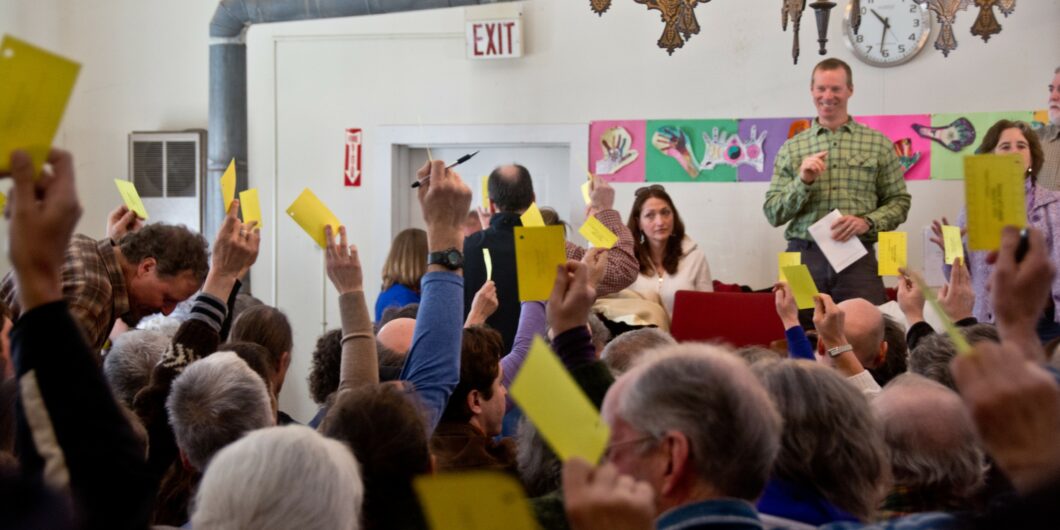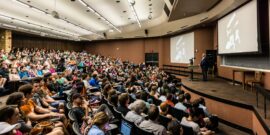What’s needed today is a heavy dose of trust-busting, deregulation, and entrepreneurial energy.
Seeking Consensus in Education
The Department of Education’s 1983 report, A Nation at Risk, warned of the “rising tide of mediocrity that threatens our very future as a Nation and a people,” adding that “if an unfriendly foreign power had attempted to impose on America the mediocre educational performance that exists today, we might well have viewed it as an act of war.”
If you ask the average American conservative today, he will opine that an unfriendly domestic power has imposed, not a mediocre, but an actively pernicious program at every level of our educational system. While many Americans are dissatisfied with poor educational performance, it is chiefly conservatives who believe that American education is overwhelmed by a program of radical progressive politics. Getting Education Right: A Conservative Vision for Improving Early Childhood, K-12, and College by Frederick M. Hess and Michael Q. McShane attempts to thread the needle of both challenges, of incompetence and ideology, of falling test grades and rising political leftism among younger generations.
Addressed to both left- and right-leaning readers, the book is a welcome contribution to the growing stock of conservative ideas about education reform. Getting Education Right is practical, a testimony to the considerable hands-on teaching experience of the authors and it is no Arnoldian system of universal reform headed by a master. Instead, important policy proposals in each sector of educational life are treated carefully and realistically.
The authors maintain a series of core principles, some of them conservative, others simply common sense. They believe that wisdom should guide education policy, that schools should form both teachers and students, and that education should create love of place, community, and nation. Their first principle is perhaps the most distinctive. “Education Should Be a Handshake,” they suggest, a fact that necessitates “personal responsibility” on the part of administrators and teachers but also parents and students. A good society requires proper education, but proper education is not the sole province of teachers. Parents also have a role to play in contributing to curriculum (Hess and McShane insist on this) but also in providing a proper educational environment for their students. A sole focus on “parental rights,” they suggest, misses the fundamental responsibility parents have as well.
Amid various proposals addressed by the book, two problems stand out: the split over school choice and public education, and the challenge of determining what values should organize American education. Considering the question of school choice, Hess and McShane reject a single national solution and instead welcome alternatives, from the founding of charter schools and the proliferation of school vouchers to the rebuilding of public schools and election reform for school board selection. Hess and McShane embrace a market-friendly logic of creative destruction: let many flowers bloom and fight for their sunlight.
The second problem comes from the intense ideological divide about education. In a world where responsibility and punctuality can be decried as “white supremacist values,” we may well ask whose values are sufficiently mainstream to undergird public education. Hess and McShane believe that the ideological struggle over public education covers a set of core values in which Americans, right and left, almost universally believe: the value of hard work, the equal dignity of every person, the value of pluralism, and the fair-minded appreciation of the American history that grounds these values in the story of freedom.
Both these messages are highly attractive in an age of extremes. It is this second that gives pause. Many conservatives will feel reassured when they read that Americans are less divided on core principles than we may think. But are they? Hess and McShane provide data about opinions on American history, hard work, and the pursuit of truth. For instance, they note that “88% of adults said they regard responsibility for one’s actions as a ‘very important’ component of what it means to be a ‘real American,’” and “90% said the same about ‘treating people equally.’” However, the absence of discussion of religious belief is notable, as is any discussion of the education gap between registered Republicans and Democrats. It is possible that America is more divided on core values than the authors suspect, and these divisions may imperil their pluralistic vision of education.
These reflections should not be taken too far. No doubt there remain core educational values embraced by nearly all Americans, but the distinction between ideological distortions and educational good practice is perhaps blurrier than they suggest.
For instance, Hess and McShane address the progressive program of “Universal Pre-K,” a platform that in its popular form of Mayor Bill de Blasio augments and empowers the existing complicated and rich public education system. De Blasio’s system “effectively tacks an extra grade (or two) on the front end of K-12.” This system robs more control from parents and hardens the already powerful education monopoly. Moreover, as Hess and McShane also show, pre-K does not always produce better students and citizens. Just as not every young adult needs college (as the authors suggest), not every child will benefit from pre-K education, especially in bureaucratized public schools alienated from the values and conditions of their family life.
It is not clear that a progressive and conservative looking at this situation will see the same problems, nor will they fully agree about what constitutes a solution. The authors announce their intention to speak good ideas and applaud their adoption wherever the reader finds them congenial, without worry about the political labels. But, of course, the ideal of a unified, national pre-K suits the progressive vision of a singular national moral effort, over and against a more conservative vision of federated communities. If a progressive reader accepts their perspective on pre-K, Hess and McShane will in fact have moved him right, as his progressive friends will no doubt let him know.
The book is written in a vibrant, conversational style that is sure to attract readers of all stripes. Conservatives will especially enjoy the tone of straight talk combined with periodic excursions of reverence. Rather than simply define gratitude, the authors describe a parade through the National Mall’s monumental arcades. “That man is little to be envied,” said Samuel Johnson, “whose patriotism would not gain force upon the plain of Marathon, or whose piety would not grow warmer among the ruins of Iona.” Likewise, the American heart that grows no larger in the historic gaze of Lincoln, Jefferson, and King is probably not the heart of an American conservative. Hess and McShane show facility with the furniture of the American heart, and any conservative is likely to feel understood by the authors, at least in part, in these passages.
This fact of speaking to conservatives may subject the book to criticism. Progressive readers will find the book informed by uncongenial media narratives about the education system. Despite the irenicism, it may well be that the authors have written a conservative book for the already convinced. A progressive reader who has not sampled the world of conservative media may find themselves shocked to hear points and perspectives that turn their world on its head. This element of culture shock may prove therapeutic. The part that may annoy the progressive reader most—the reporting of anecdotes of social justice excesses, may prove the most salutary. For instance, Hess and McShane cite an incredible story in which the “Ethnic Studies Curriculum” of the California State Board of Education introduced mandatory school prayer in the form of a pseudo-Aztec chant that children had to recite to the gods Tezcatlipoca and Huitzilopochtli. Thankfully, the ends of cultural awareness and diversity did not require any of the bloodier rituals of the historical Aztecs, and as it turns out, the chant was invented (as the authors joke “appropriated”) by modern Californians. Absurd stories like this reveal serious problems, and the authors’ irenic tone could be a gateway for progressive readers to facts, stories, and opinions that usually find voice exclusively in the frustrated world of conservative reporting.
The Covid-19 school shutdowns and the grassroots controversy over Critical Race Theory prove that the education sector is not a pristine grove free from the ideological polarization of the rest of American society. Hess and McShane think conservatives have a special opportunity to reform education, because so many of the recent educational hot-button issues cut against Democrats. Getting students back on track sounds like a winning political message, but perhaps Hess and McShane overestimate the agreement about what constitutes “back on track.”
Despite the book’s clear conservative commitment, its light touch when it comes to ideology can’t quite make sense out of our deeply contested political moment. Hess and McShane minimize the extent to which progressive educational reformers believe what they say, and on the other side, religious and social conservatives will find little here to address their concerns. Progressive educational reformers have used schools as a platform to advance liberal views about gender and sexuality, and many religious conservatives may object to the prospect of bilateral disarmament. In trying to depoliticize public schools, it may seem that Hess and McShane want to prevent conservative governors and legislatures from using an important tool of social reform just as decades of leftwing use of education for the sake of “consciousness-raising” has paid off. The values put forward by Hess and McShane, though valuable, will seem partial to Americans who watch transformations in the wider culture with dismay.
Getting Education Right should be widely read and discussed. One of its virtues is the authors’ self-conscious intention to provoke and ask questions, providing answers that must always be checked by argument, fact, and experience. The chief treasure of the book is a chapter of “Questions & Answers,” posed from Right, Left, and Center. They address claims that “personal responsibility” is a mere “dog whistle,” and discuss whether education should be treated as a public good. One of their questions comes from an imaginary conservative reader: “Some of this is fine, as far as it goes. But the problem is that you two sound pretty naïve. You don’t seem to get how dire things are or how committed the left is to tearing this country down. What do you say to that?” Their answer is honest: “It sounds like we just see things differently.” If the authors’ program of careful evaluation, pragmatic reform, and zesty optimism does not succeed, it will be because their fellow Americans just see things differently.

